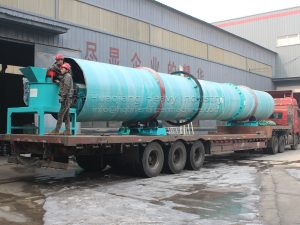Heat and mass transfer mechanism of drum fertilizer dryer
Drying is a simultaneous transfer process of heat and mass transfer, and the two processes are closely related. When the drum fertilizer dryer is working, the contact between the material film and the outer wall of the rotary drum is quite good after the wet material film is formed on the outer wall of the rotary drum. This assumption does not cause a large error in the calculation of heat and mass transfer in the drying of liquid materials, so it can be considered that there is no heating resistance between the material film and the outer wall of the drum.
The heat transfer mechanism of drum fertilizer dryer consists of three parts: convection heat transfer of the heating medium in the drum, such as steam condensation heat transfer; Heat conduction of scale layer, drum wall and material film; Convective heat transfer outside the film.

Strictly speaking, there is a laminar flow bottom layer formed by the wet separation and vaporization of the material at the junction of the material film and the external space. The heat transfer is based on heat conduction through the laminar flow bottom layer, in order to reach the heat transfer area based on convective heat transfer. Because the thickness of the bottom layer of the laminar flow is difficult to be measured, the thermal resistance of the bottom layer of the laminar flow can be calculated by the treatment of convective heat transfer coefficient in heat transfer science, and the thermal resistance of the bottom layer of the laminar flow can be combined with the convective heat transfer coefficient. Convective heat transfer coefficient includes two heat transfer modes: the bottom layer of laminar flow outside the drum and the convection heat transfer in outer space.
The above is the content of “heat and mass transfer mechanism of drum fertilizer dryer” organized by Huaqiang Heavy Industries. If you want to know more about organic fertilizer production knowledge, welcome to inquire.
